The ABCs of Product Certification
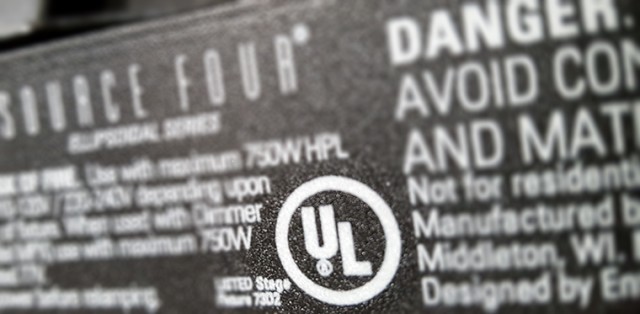
Today we are joined in the Lounge by Jeff Mateer, Senior Vice President of Business Development at 4Wall Los Angeles! Before joining 4Wall, Jeff successfully guided over a dozen products through the ETL certification. We've asked Jeff to give us a rundown of common certifications you will encounter in the lighting industry and what they mean.
So you’re waiting backstage for your next cue when your eyes focus on the back of a piece of electrical equipment. Amidst the familiar warnings of “no user serviceable parts inside” and “do not use while in the bathtub” you see an array of unfamiliar letters.
What do “UL”, “ETL”, “CE”, “CSA” and "IP" mean, and why are they important to me? This article will attempt to explain these markings.
At the foundation of all product certification is the issue of safety. Several non-governmental agencies were created to accomplish this goal.
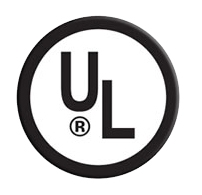 The oldest agency is Underwriters Laboratories. UL, as it is commonly referred to, was founded in 1894 near Chicago. With the advent of electrical systems and lighting products, a need was identified to make sure that this new technology was useful and not harmful. The lab began to inspect products and define what was safe and acceptable. Testing procedures had to be developed and standards were written. Next, inspection methods and enforcement guidelines were created. For decades UL was the only widely recognized standard of product safety.
The oldest agency is Underwriters Laboratories. UL, as it is commonly referred to, was founded in 1894 near Chicago. With the advent of electrical systems and lighting products, a need was identified to make sure that this new technology was useful and not harmful. The lab began to inspect products and define what was safe and acceptable. Testing procedures had to be developed and standards were written. Next, inspection methods and enforcement guidelines were created. For decades UL was the only widely recognized standard of product safety.
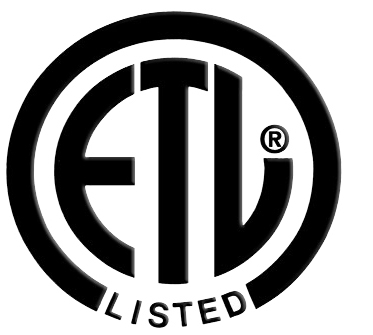 Electrical Testing Laboratories (ETL) has been around almost as long as UL but has only recently become an equal competitor through mergers and acquisitions. ETL is considered by many to be less stodgy and more nimble than UL. The biggest difference between the two is UL tests to its own standards. ETL also tests using UL’s standards, but it can also apply its own interpretation.
Electrical Testing Laboratories (ETL) has been around almost as long as UL but has only recently become an equal competitor through mergers and acquisitions. ETL is considered by many to be less stodgy and more nimble than UL. The biggest difference between the two is UL tests to its own standards. ETL also tests using UL’s standards, but it can also apply its own interpretation.
Are the two testing facilities equal? Yes and no. Yes, because both are nationally recognized testing agencies. From a consumer’s or professional’s point of view, products with either certification are safe. No, because where a UL mark is almost universally accepted, a product with an ETL mark may or may not be. The stringent UL certification process can take longer and cost more than an ETL mark.
How do products earn the right to mark with either of these emblems?
The first step is to determine which standards apply to the products under consideration. Most lighting fixtures in our industry are covered under UL Standard 1573 – Standard for Stage and Studio Lumininaires and Connector Strips. The standard defines construction parameters for mechanical, electrical and performance. Manufacturers of lighting fixtures must submit copious documents about the metal, wiring, lamps, glass and coatings intended to be used in their products.
The next step is to submit actual fixtures to the testing agency. This can be a challenge since before the certification process, products are often in the prototyping stage. Any changes between the prototype and actual final version must be re-submitted before approval. The lab usually requires several samples. One sample is disassembled to verify all components match the documents submitted. A second is often used for long term testing. Additional samples will be used for destructive testing. All samples are generally returned to the manufacturer after testing. Don’t expect that these samples will look anything like what you sent. Often only a box of parts that once comprised a working fixture is returned.
The lab will advise what warning labels must be included on the product and in operation manuals. The list can be extensive and strictly defines placement, font and languages for each warning. Any voltage and current information is included in this phase.
It isn’t unusual to have to submit several rounds of manuals, drawings, revisions and samples. Once the lab is satisfied that the product is electrically, thermally and mechanically safe, the manufacturer is given the right to mark with the labs emblem.
If it is the first product submitted by a manufacturer, the lab conducts what is called an initial factory inspection. This scheduled visit checks for inventory handling, record keeping and assembly methods. But it isn’t time to relax yet! Unannounced visits to the manufacturing facility occur quarterly to insure the product is still being produced according to the original documentation. If any anomalies are discovered, the right to mark is rescinded until the manufacturing process is corrected.
There are several other marks you might see on the back of lighting products.
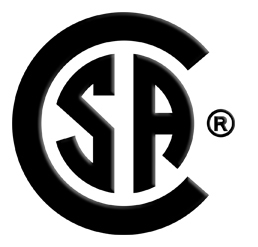 The Canadian Standards Association mark, CSA is occasionally required for products sold in Canada.
The Canadian Standards Association mark, CSA is occasionally required for products sold in Canada.
 This mark is known as the Restriction of Hazardous Substances. Several years ago, agencies in Europe set out to regulate materials used in products. Manufacturers had to identify hazardous materials, such as lead solder, used in their products. Limits were placed on using these materials and manufacturers had to develop plans to recycle and reclaim the hazardous materials at the end of the product lifespan.
This mark is known as the Restriction of Hazardous Substances. Several years ago, agencies in Europe set out to regulate materials used in products. Manufacturers had to identify hazardous materials, such as lead solder, used in their products. Limits were placed on using these materials and manufacturers had to develop plans to recycle and reclaim the hazardous materials at the end of the product lifespan.
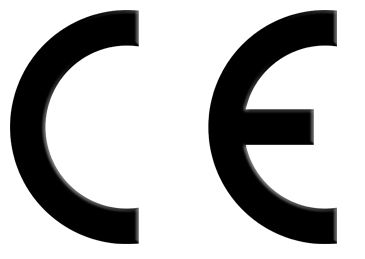 The CE mark is a symbol denoting manufacturing conformation for the European Community. Manufacturers around the world are required to meet several safety, radio frequency and low voltage initiatives in order to be permitted to sell products in Europe. It is important to note that this mark is self-certifying. This means that the manufacturers do not have to submit to an external agency for testing but must keep documents on file if asked for conformation proof.
The CE mark is a symbol denoting manufacturing conformation for the European Community. Manufacturers around the world are required to meet several safety, radio frequency and low voltage initiatives in order to be permitted to sell products in Europe. It is important to note that this mark is self-certifying. This means that the manufacturers do not have to submit to an external agency for testing but must keep documents on file if asked for conformation proof.
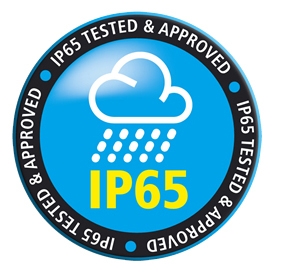 The last rating we’ll consider is known as Ingress Protection, or IP. In our industry, the IP rating is generally synonymous with water proofing. Products carrying an IP20 rating will keep fingers out but not moisture of any kind. IP54 products can be used in moist applications but not in direct rain. IP65 designates a product that can operate rain. Submersible products are rated IP68. This rating is also self-certifying. Manufacturers can perform tests in-house within specific guidelines but must be able to verify their product rating.
The last rating we’ll consider is known as Ingress Protection, or IP. In our industry, the IP rating is generally synonymous with water proofing. Products carrying an IP20 rating will keep fingers out but not moisture of any kind. IP54 products can be used in moist applications but not in direct rain. IP65 designates a product that can operate rain. Submersible products are rated IP68. This rating is also self-certifying. Manufacturers can perform tests in-house within specific guidelines but must be able to verify their product rating.
Overall, the systems for product certification work well. Seldom do outright unsafe products appear in our industry. Of course, common sense must still prevail. Operating safe devices in an unsafe manner are still possible. Drying ones hair while in the bathtub comes to mind.
Now be sure to be on time for that cue mentioned in the first sentence!
 | Jeff Mateer is senior vice president of business development at 4Wall Los Angeles. |
